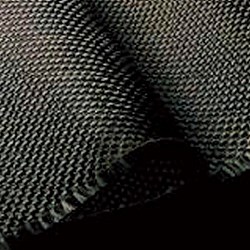Toray makes waves with Zoltek purchase
Toray was already the largest carbon fiber maker in the world, and with Zoltek it not only gets bigger, but expands into new markets.

Toray (Tokyo, Japan) is well known for supplying material to the aerospace market, with its carbon fiber used extensively in the Boeing 787 and other aircraft. Such fiber, of course, is of the high-modulus, low-tow (1k to 24k) type and generally too expensive for use in non-aerospace markets like automotive, wind and industrial. And it seemed that Toray was happy to dominate the high-performance carbon fiber segment. On top of that, Toray was the leader of the overall carbon fiber market with a share of market of about 17 percent.
It was with some surprise, then, when Toray announced last week that it is acquiring Zoltek (St. Louis, Mo., USA). Zoltek's carbon fiber is a 50k tow material marketed to the wind and automotive markets and thus represents all that Toray is not. Further, Zoltek's capacity is almost on par with Toray's and holds about a 16 percent market share.
Odd couple?
Maybe not. Although carbon fiber cut its teeth in the aerospace market, it's well known that carbon fiber use, in terms of shear volume, is trending toward industrial applications. Toray surely saw that it would eventually have to expand into the industrial market. Adding carbon fiber capacity — particularly of a type not currently in the Toray portfolio — is expensive and time-consuming. For $584 million to buy Zoltek, Toray does many things simultaneously: Acquires product for the industrial marketplace; becomes, by far, the largest supplier of carbon fiber in the world; and avoids the time required to ramp up new carbon fiber production. It's a good deal for Toray and a good deal for Zoltek. We'll see if it's a good deal for composites manufacturers.
Related Content
-
Plant tour: Joby Aviation, Marina, Calif., U.S.
As the advanced air mobility market begins to take shape, market leader Joby Aviation works to industrialize composites manufacturing for its first-generation, composites-intensive, all-electric air taxi.
-
Sulapac introduces Sulapac Flow 1.7 to replace PLA, ABS and PP in FDM, FGF
Available as filament and granules for extrusion, new wood composite matches properties yet is compostable, eliminates microplastics and reduces carbon footprint.
-
Recycling end-of-life composite parts: New methods, markets
From infrastructure solutions to consumer products, Polish recycler Anmet and Netherlands-based researchers are developing new methods for repurposing wind turbine blades and other composite parts.
















